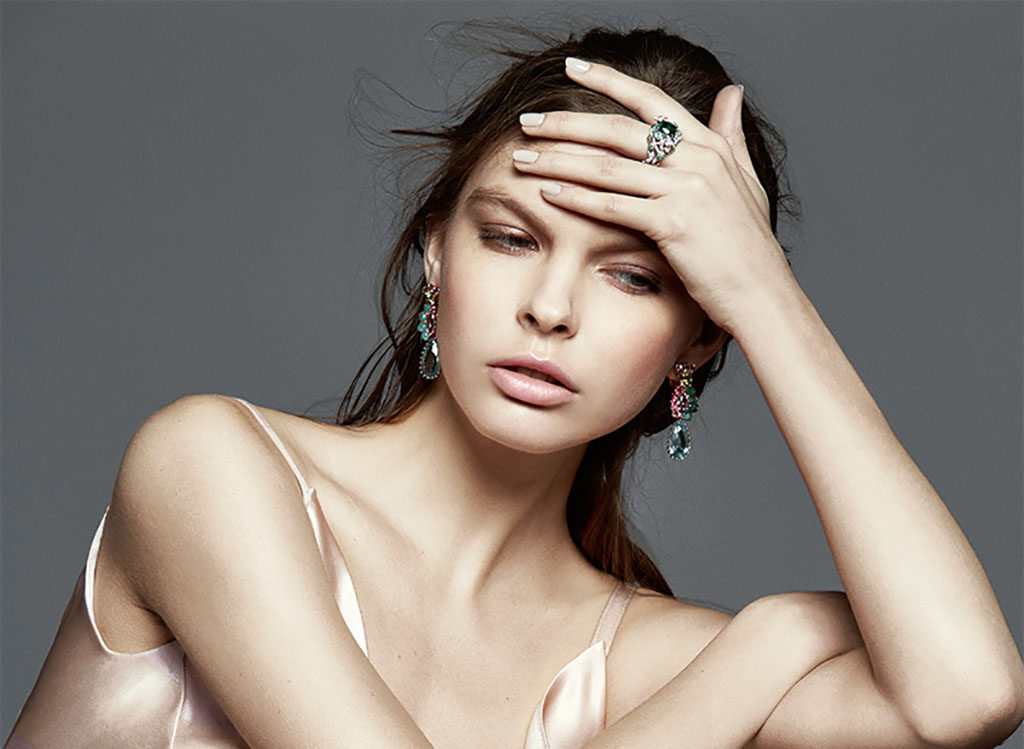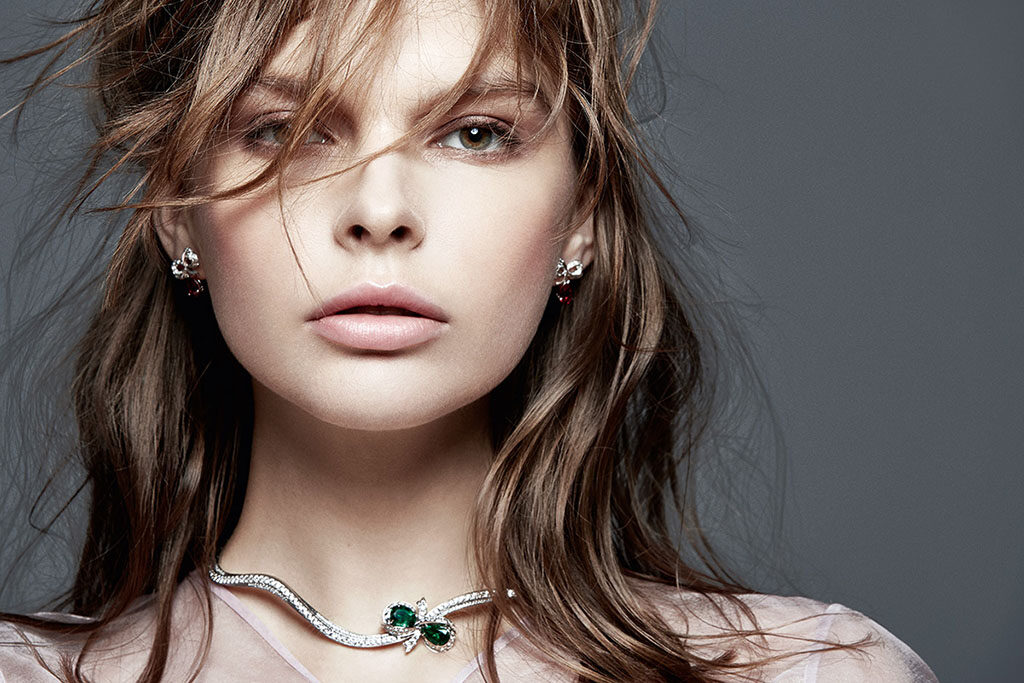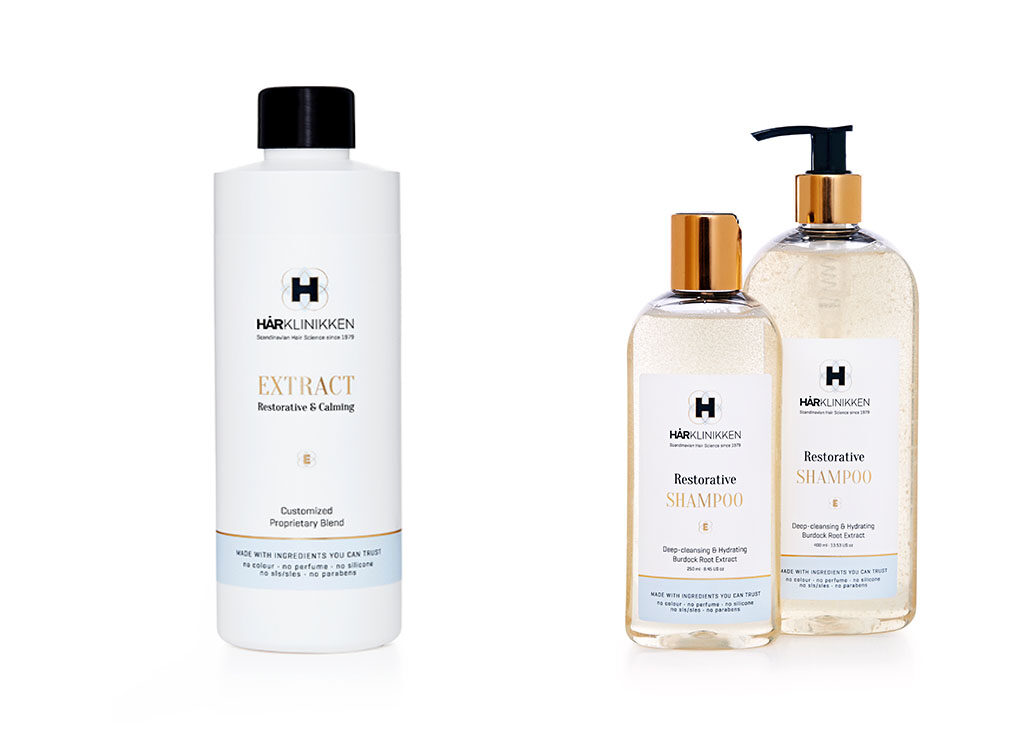
Photography: MOJEH/Anthony Arquier
Dubai is world-famous for many things; having the tallest, fastest, biggest and best of everything are the most commonly-known accolades. But ask any man or woman who’s been in the city for a number of years, and they’ll tell you something else that may not be so internationally recognised – living in Dubai seems to make their hair fall out. From more strands than you’d expect finding their way down the plug hole every morning, to hair that doesn’t feel quite as thick as it used to, there’s no denying that something bad seems to happen to your crowning glory once you’ve been residing in this city for a while – something that’s as far from Dubai’s glamorous image as it possibly could be.
So what’s behind this widely-experienced problem? By and large, the local water gets most of the blame. But despite numerous studies showing the UAE’s main water supply contains nothing that causes hair to fall out, that still doesn’t stop the commonly-held belief perpetuating itself year in, year out.
“The water in the UAE has actually got nothing to do with why you’re losing your hair,” says Lars Skjøth, founder and head of research and development at Danish hair loss specialists, Harklinikken, when we meet at his Dubai clinic on Jumeirah Beach Road. “People whose hair is thinning here speculate on a variety of potentially problematic factors, and Dubai’s water is the first thing they blame. But they also blame the weather, or maybe the fact they dye their hair – however, neither of these things, or numerous others, are the singular reason for why their hair is thinning,” he explains.
Having treated over 100,000 clients worldwide since opening his first hair loss clinic in Copenhagen in 1992, including European royalty and numerous high-profile celebrities, Harklinikken is renowned for unparalled results in regenerative hair treatment, and has helped thousands of Middle Eastern clients facing thinning and hair loss regain their mane.
“There are a number of combined issues that can exacerbate a developing or existing hair loss problem,” continues Lars. “Before we even opened a clinic in Dubai, I started doing research about the region, because Middle Eastern clients were travelling all the way to Denmark to see us for consultations and treatment. I realised that not only were there a lot of people experiencing significant hair loss issues in this part of the world, but also that the clients we were treating were responding really well to our methods.”
Hair loss is typically categorised into two types: genetic, where there is a hereditary predisposition to hair thinning, and reactive, where hair loss is the result of a trigger or trauma. And while these problems are undisputedly a global issue, there are a number of environmental factors in the Middle East that combine to heighten the hair loss problem faced by the regional population.
“Blaming the water alone simply isn’t correct,” explains Lars. “People here are constantly exposed to a number of different kinds of environmental stress they simply wouldn’t face if they lived somewhere like Europe, for example. Here in the UAE, you are consistently exposed to massive heat, light and constant air conditioning. You also inadvertently end up consuming a lot of foods that come from local crops or animals that are not grown or reared on nutrient-rich soils like you’d find in countries that benefit from more temperate climates. Then there’s the fact that you could be deficient in vitamin D, because you don’t spend enough time out in the sun, since it’s frequently too hot, so you stay indoors, or wear a high SPF sunscreen to protect your skin from UVA and UVB rays. And then there’s the water. It’s perfectly safe, of course, but the desalination process doesn’t just remove the salt, it also removes other trace minerals, which you can’t replace, but play an important part in water’s chemical composition.”
According to the American Academy of Dermatologists, it’s normal to lose anywhere between 50 and 100 strands of hair on a daily basis. People with longer hair may find it more noticeable, but since there are around 100,000 hair follicles on the average person’s scalp, the loss of 100 or so hairs every day doesn’t make a particularly big difference to the hair’s overall appearance. But when you start shedding significantly more than that, or notice that hairs aren’t growing back, that’s the time to seek the advice of a specialist.

Photography: MOJEH/Anthony Arquier
“When it comes to hair loss, there are so many potential triggers, which means it can be tricky to pinpoint why strands are falling out, and henceforth, how to remedy the situation,” says Anabel Kingsley, leading trichologist at the Philip Kingsley Clinic in London, and daughter of renowned trichologist Philip, who founded his eponymous centre in the British capital over 60 years ago. No longer considered a problem that effects just men, research has shown that less than 45 per cent of women go through life with a full head of hair, due to stress, environmental aggression, or hereditary factors.
“One in three women will experience some type of hair loss in their lifetime,” explains Anabel. “While many assume it’s only older women who are affected by hair loss or female baldness, we see growing numbers in their 20s, 30s and 40s coming to our clinics with hair loss or loss of hair volume. I’m only 35, and as a woman who has recently suffered from stress-related hair loss of her own, know that youth is no barrier to depleted hair.”
This kind of reactive hair loss, also known as telogen effluvium, happens quickly, and can see normal hair fall of up to 100 strands per day suddenly double or triple in number overnight. A reaction to shock, stress, poor diet or a general failure to look after yourself, it’s this type of hair loss that Anabel believes to be on the rise, particularly amongst women, pointing to the increased popularity of fad diets, specifically veganism and vegetarianism.
“The hair is a fantastic barometer of your emotional state as well as your diet,” she explains. “Even if you’re only slightly deficient in a nutrient, the body withholds this from the hair first before anywhere else. If you do too much, run on empty, or don’t give yourself time to eat properly, it’s your hair that will pay the price.” Since hair is not an essential tissue, meaning the body can physically survive without it, even if you are really careful whilst following a specific eating plan, it can be hard to get the protein and iron required for hair to grow healthily. And if you’re not eating enough of the correct foods or your body is not absorbing enough of the nutrients, this can result in excessive hair shredding.
“I can completely understand my clients’ reasons for being vegan or veggie, but it’s very difficult with those diets to combine the correct food groups to give the hair what it needs,” says Anabel. “Fish and eggs, for example, have all eight essential amino acids that you need, while a grain or legume would only have a few of those. If you only get one set of amino acids from a source of protein, you need to get the rest from somewhere else. The body can make amino acids on its own, but not those eight essential ones, which means they have to be consumed every day. Just taking supplements in the hope they will fill the gaps in the body’s nutritional requirements won’t necessarily be enough.”
Genetic hair loss, where hair thins and loses volume over time, causes hair follicles on the scalp to become sensitive to normal levels of circulating male hormones, known as androgens, with hair follicles getting gradually smaller, producing slightly finer and shorter strands with each passing hair growth cycle. While being hereditary, it can also be exacerbated by stress, which raises those androgen levels, thus concentrating the issue.
“Most of us, without even knowing it, are gradually thinning, and actually thinning in a way where the hairs are slowly miniaturising,” says Lars. “That’s why thinning can sneak up on you – gradually, the hair becomes less and less full, but you may not notice it happening in the beginning,” he explains. “Maybe the hair first becomes a little see-through. Maybe the hair seems straggly, or more wispy, or dry than it ever used to be in the past. And each time a hair falls out, the one that replaces it is not of the same thickness or quality as the one before may have been. So as the hair thins, the more you see of the scalp underneath that was previously covered. And as the hair density decreases, slowly, over a number of years, the hair looks and feel a lot thinner than before.”
A pioneer in the science of hair regrowth, and with over 25 years of dedicated research into hereditary and reactive hair loss, the cornerstone of the Harklinikken restorative hair programme is Extract; a nutrient-rich, plant-based product rich in natural tannins, fatty oils and fatty acids, using proprietary ingredients derived from cows milk, burdock root and marigold.

Harklinikken’s own brand products
Following a thorough assessment of the scalp, hair and hair loss condition, only those candidates Lars is convinced will benefit from their hair regeneration programme will be treated, using state-of-the-art technology to document results, and specialist guidance on the daily application of their custom-made star product.
Combined in a 3-step fermentation process unique to Harklinikken, isolating components to heal and care for the scalp, Extract is individually tailored and continually adjusted throughout each client’s specific treatment programme. Applied to thinning areas of the scalp, usually at night, over consecutive months in order to reverse the effects of hair loss or thinning, and improve the quality and texture of the hair, Extract formulations are updated at every follow-up appointment to maximise it’s efficacy.
With daily application key to the programme’s success, regular check-ins to adjust the Extract and specialist meetings to analyse growth, clear changes are typically seen in suitable candidates after just four months. Four out of five clients go to Harklinikken as referrals, and after the initial four month treatment programme, using hand-blended Extract combined solely with the clinic’s range of colour, perfume, silicone, paraben petrochemical and sls/els-free cleansing and conditioning products, most clients regain at least 30 per cent of lost hair density, with some achieving up to 60 per cent, according to verified company figures.
And while clients say one of the clinic’s many strengths is the fact it doesn’t claim their treatment to be a miracle, the clinically-proven results seen with successful hair regrowth in thousands of satisfied clients is nothing less than compelling.
“It’s not about a short-term result here,” says Lars of the evidence that supports the success of Harklinikken’s treatment. Whether clients only follow a short programme to remedy their hair loss problems, or continue their treatment to maintain results for life, if treatment remains consistent, strong, dense, healthy hair is something Lars claims that clients can keep forever.
“We’re not just talking about producing a little bit of fine new hair. We’re talking about growing new hair into strong, thick hairs, and doing it consistently,” he says. “Hair loss is categorically not a black and white subject, where one solution suits everybody. It’s about understanding all the minor details which I think you can only do if you spend enough time with the client to appreciate and evaluate their individual problem. Each person’s hair loss story is unique, and there are numerous factors that are a part of it. We try and approach our treatment from as much of a holistic standpoint as possible, really trying to take into consideration all the elements that could directly or indirectly impact upon the situation.”
Adding, “Even though I’ve spent many years in the lab, the greatest things I’ve ever learned as a scientist has come from the time I’ve spent in the clinic with clients. Going back to the lab and adjusting my work after returning to the clinic to learn more is why we have actually made a discovery that really and truly works.”
For more information visit Harklinikken.ae




